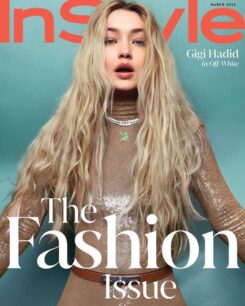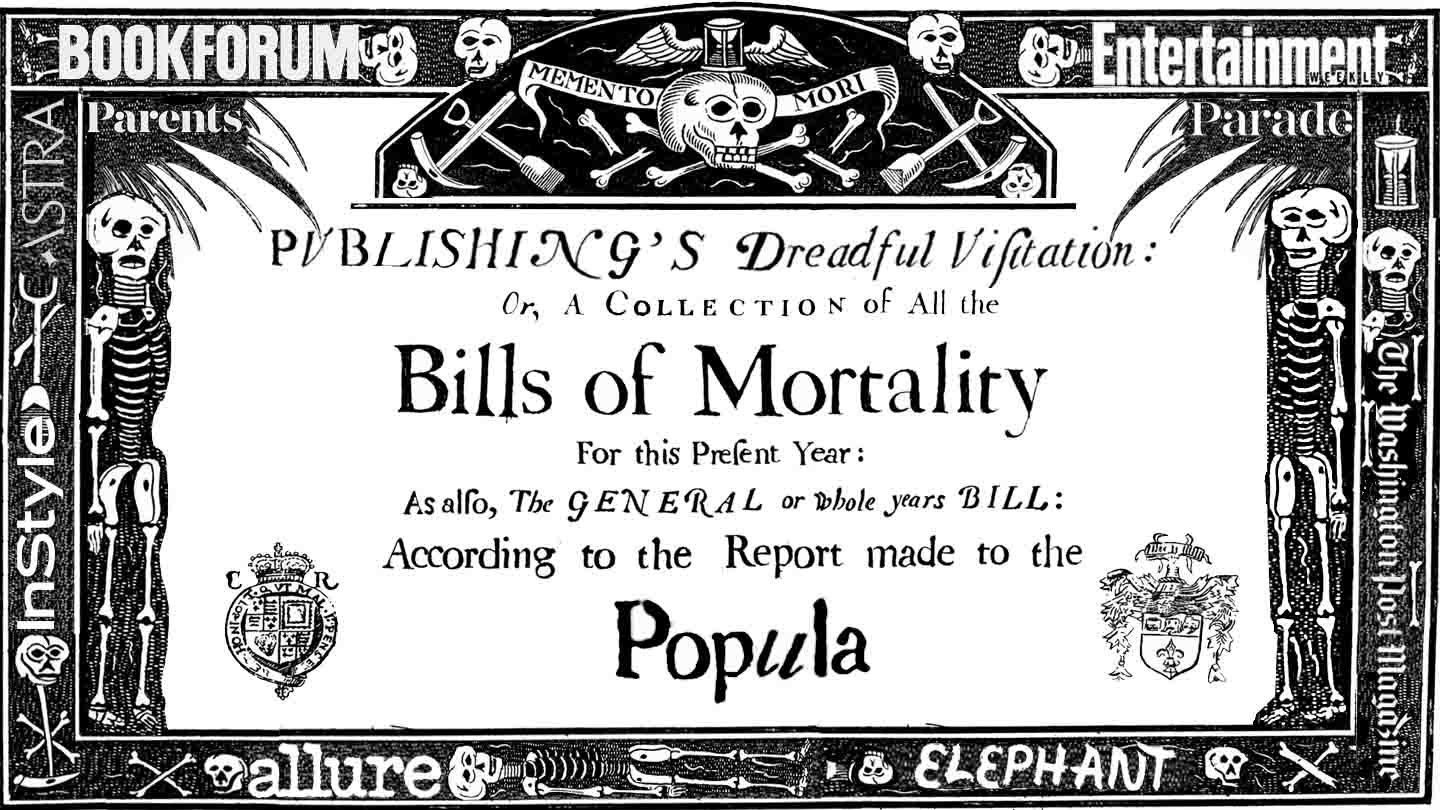MAGAZINES ARE LIKE wolves: Endangered, but not yet extinct. Sure, people are hunting them and their habitats are shrinking, but there are still some out there in the wild. The pack grows thin—and individuals dangerously thin themselves—but magazines survive.
There are even a few very rare wild births to offer hope. This year saw the relaunch of CREEM, an oversized quarterly reboot of the ’70s era Detroit music magazine with the nerve to proclaim itself “America’s Only Rock ‘N’ Roll Magazine.” 2022 also saw the return of The Believer (“America’s Only Book Reviews ‘N’ Nick Hornby’s Reading Habits Magazine”?). That both publications found their benefactors and/or readers is proof that some people still want to look at something other than their phones—and not just the dozen teenagers profiled in the Style section.
But this is not a celebration of new publications; it’s a eulogy for the ones that died in 2022. This year saw the end of several beloved long-running magazines and a few new ones barely given a chance to shed their baby fur. Some of these still show signs of life as digital publications or quarterly supermarket checkout impulse buys, but each now rests in print.
Allure: 1991–2022

Linda Wells created this fashion and lifestyle magazine for Condé Nast and ran it for two decades before Michelle Lee took over in 2015. At its height, Allure reached 1 million in circulation, featured every supermodel of its era on the cover, and won an ASME in 2001 for design.
From the Memory Hole: 1997, high camp portraitist David LaChapelle shot a series of photos of Mira Sorvino as scandalous figures from Hollywood history including Frances Farmer mid-breakdown, Lana Turner standing over Johnny Stompanato’s corpse, and Joan Crawford in scare makeup in homage to Whatever Happened to Baby Jane. The only problem was that Sorvino refused to pose as Crawford and LaChapelle reportedly used Photoshop to make the image anyway, angering the actress and her reps.
Astra 2022–2022

Launched in April of this year by a Chinese media conglomerate with the delightfully dystopian name of Thinkingdom Media Group, Astra was edited by Nadja Spiegelman, daughter of cartoonist Art Spiegelman and New Yorker art editor Françoise Mouly. With contributors like Ottessa Moshfegh and Ada Limón, Astra was off to an impressive start with two issues out before its parent company pulled the plug in December.
From the Memory Hole: Issue three, called the “Broke” issue, which will never see print.

Bookforum: 1994–2022
The small, beloved literary review was left to fend for itself when Penske Media acquired its parent publication, Artforum, in December. While it changed format and frequency over the years, Bookforum was a rare magazine that put writers on the cover and served as a safe space for freelance book critics, a breed so rare that each one is now tagged and tracked.
From the Memory Hole: Artforum‘s co-publisher resigned in 2017 after he was accused of sexual harrassment by nine women and his own staff condemned him.

Entertainment Weekly: 1990-2022
In its heyday, EW’s publicist-friendly mix of celebrity profiles, studio-approved set reports, listicles, pun headlines, and letter-grade reviews was roundly mocked. But during the waning days of the Time, Inc. empire, Entertainment Weekly was a highly influential and Important Magazine. (Believe me, that’s not easy for me to say since Jeff Jarvis can—and frequently does—take credit for creating it.) Sure, EW lobbed softballs and frequently hyped its parent company’s products (read: synergy), but like Rolling Stone in its prime, it made readers feel like they were part of the entertainment business, not just pressing their noses against the glass. It also launched the careers of Mark Harris, Gillian Flynn, Marc Bernardin, Alexandra Jacobs, David Hajdu, and this writer, who was paid handsomely (with overtime after 6 p.m., and dinner and a car voucher after 7!) to run pages from desk to desk as copy made its way to print.
From the Memory Hole: In February 1995, Martin Amis was accused of borrowing several lines of an October 21, 1994 Entertainment Weekly piece about Travolta by Jeff Gordinier for a profile he wrote about the actor for The New Yorker. James W. Seymore, Jr., EW’s Managing Editor at the time, wrote a punchy letter to the New Yorker’s editor Tina Brown accusing Amis (an ex of hers, by the way) of “a half-dozen or so borrowings.” Along with being embarrassed, Amis must’ve also been amused by being the one on the receiving end of a plagiarism accusation.

InStyle: 1994-2022
Like EW, InStyle was a jewel in Time Inc.’s late 20th century crown. Also like EW, it was a friendly place for celebrities, but rather than talking about the industry, they talked about their skin care routines. Mocked as “the puffiest magazine in America,” InStyle never pretended to be anything more than it was: a big, fat, shiny magazine you could read at the salon while waiting for your nails to dry.
From the Memory Hole: More than once, the magazine’s allegedly heavy-handed Photoshopping got it in trouble: A 2015 cover of Kerry Washington appeared to lighten the actress’s skin; a 2019 cover of Jennifer Aniston apparently darkened hers; a 2021 cover of Reese Witherspoon was criticized for making her look “embalmed.”
Also departed this year:
Elephant: 2009–2022
Parade: 1941–2022
Parents: 1926–2022
Protocol: 2020–2022
The Washington Post Magazine: 1986–2022
Matt Haber lives in the Bay Area and works for Alta Journal. He subscribes to 8 magazines (in print).
Thank you for reading POPULA! Add your email here to receive our newsletter!






